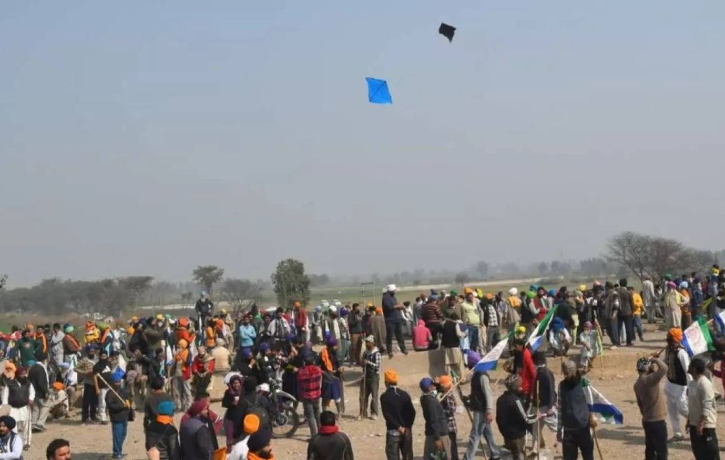Farmers Fly Kites, In the heart of India, a captivating struggle unfolds – a modern-day David vs. Goliath playing out on the dusty plains. On one side stand determined farmers, their “Delhi Chalo” (March to Delhi) cry echoing through the fields, demanding better crop prices from the government. On the other, a wall of state-of-the-art security forces attempts to halt their progress 200 kilometers from the capital.
But these farmers are not your average protestors. Armed not with guns or explosives, but with grit and an impressive capacity for improvisation, they face down the might of the state. Tractors and trucks morph into makeshift shields, water-soaked sacks become tear gas barriers, and repurposed blowers offer some semblance of defense against the stinging fumes.
However, the farmers' true stroke of ingenuity takes flight quite literally. Many, with past military experience, have weaponized kites. These seemingly innocuous toys, crafted with long, sturdy strings, aim to ensnare the rotors of police drones dropping tear gas. This simple innovation effectively grounds the aerial threat, a testament to the resourcefulness born from desperation.
The police, however, refuse to be outdone. Drones remain their weapon of choice, but the tactics escalate. Roads become battlefields, ripped open by heavy machinery to create impassable trenches. The air fills with the unnerving whine of high-pitched sound devices, attempting to disorient and deter the advancing farmers. Lubricants are used to coat the streets, transforming them into treacherous, slick surfaces for any who dare to approach on horseback.
Farmers Fly Kites, A Tale of Rural Resilience
The farmers' struggle isn't just about crop prices; it's a fight for survival. Many come from generations of families who have tilled the land, facing the vagaries of weather and volatile markets. The recent agricultural reforms, they fear, will leave them at the mercy of corporate giants and further squeeze their already shrinking margins. This desperation fuels their determination, pushing them to improvise and adapt with remarkable ingenuity.
The story extends beyond the immediate battlefield. Back in their villages, women and children play a crucial role. They organize support networks, providing food and medical aid to the protestors. Social media has become a powerful weapon, with messages and live streams keeping the world informed and garnering international support for their cause.
Negotiations and Uncertainties
Talks between the farmers and government officials are underway, but the path to resolution remains unclear. The government faces immense pressure to find a solution that addresses the farmers' concerns without jeopardizing economic reforms. The farmers, on the other hand, are resolute in their demands, unwilling to back down without concrete concessions.
The world watches with bated breath as this modern-day David vs. Goliath battle unfolds. Regardless of the outcome, the farmers of India have already achieved a significant victory. They have captured the world's attention, highlighting the plight of millions of rural producers worldwide struggling against the forces of globalization and corporate dominance. Their story serves as a powerful testament to the human spirit, its capacity for innovation in the face of adversity, and the unwavering pursuit of justice even against seemingly insurmountable odds.
This is not just a story about a protest; it's a story about resilience, about the power of collective action, and the ingenuity that can blossom even in the most unexpected places. The farmers of India have ignited a spark, and it remains to be seen where this movement will lead. One thing is certain: their fight for a fair deal will continue to inspire struggles for social justice across the globe.

